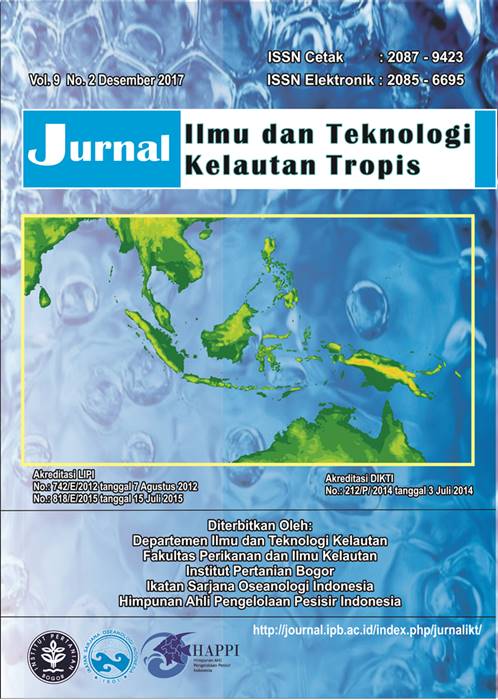THE HISTOLOGICAL, EXTRACTION AND CHARACTERIZATION COLLAGENS YELLOW-PIKE CONGER Muarenesox talabon
Abstract
By product Muarenesox talabon swim bladders can be used as a raw material for desperately needed in the food, biomedical, pharmaceutical, and cosmeceuticals industries. The aims of the research were to observed the histological and determine chemical characteristics of swim bladder including proximate and amino acids; extraction of acid soluble collagen and determine the characteristics of collagen including proximate, pH, heavy metals, microbial, amino acids, functional groups, molecular weights, and thermal stability. The morphology of cunang swim bladder consists of outer, middle, and inner layers containing collagen fibers; 33.67±0.71%wb and protein whichwere dominated by three amino acids that were glycine, proline, and alanine. Pretreatment by 0.1 M NaOH for 8 hours (K1T4) and acid extraction by 0.25 M acetic acid for 72 hours (M1T3) was the best treatment yielding 14.51± 0.43% of collagen; having 12.12±0.04% wb of moisture; 88.54 ± 0.08% wb of protein; 1.31±0.23% wb of fat; 0.17±0.03% wb of ash. Not detected any heavy metals (Pb, Hg, As, Cd). Acidity pH was 4.31 and negative of E. coli and Salmonella. The main amino acids detected were glycine 241.06 mg/g; proline 88.73mg/g; and alanine 86,98 mg/g; FTIR spectra were revealed the presence of triple helix structures; electrophoresis patterns consisted of 136 kDa of mol weight of α1 and 117 kDa of mol weight of α2 were characterisedto be type I collagen; which had Tmax of 195.59ºC and ΔH 7.8113 J/g.
Keywords: acid extraction, swim bladder, collagens, thermal stability
Authors
The author submitting the manuscript must understand and agree that the copyright of the article manuscript must be submitted/transferred to the Jurnal Ilmu dan Teknologi Kelautan Tropis. This work is licensed under the Creative Commons Attribution-ShareAlike 4.0 (CC BY-SA) International License in which the Author and Reader can copy and redistribute the material in any media or format, and remix, modify and build material for any purpose, but they must provide appropriate credit (citing articles or content), provide a link to the license, and indicate whether there is a change. If you mix, change, or create material, you must distribute your contribution under the same license as the original.

